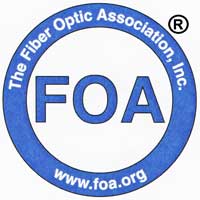

October
2021
|
Search the FOA website
FOA
Home Page Contact
Us
|
Sign
up for the FOA eMail Newsletter
Privacy
Policy
Sections
News
Technical
Worth Reading
Q&A Training/FiberU
Resoures
Safety
About
|
- Note
we have changed the format to place articles in
sections on one topic and all articles are dated so
you know if we repeat one - which we often do when
we think it's very important!
Scary
Stories
New Training & Certification Guidelines
Fiber U Basics Course Now In Spanish
Building Rural Broadband
FOA FTTH Updates & Handbook
FOA OJT Program
CFOT Renewal Requiremens For 2022
Newsletter
Sections
Click
on any link to jump to that section
News
Hello 5G, Goodbye 3G Services
Remote Working Requires Broadband
Nate Safety Training For Cell SIte Workers
New Fiber Magazine in Spanish
Technical
Scary All Year Long
Evolution of Fiber Optics
Loss Budget Calculator
Worth
Reading Lots
of interesting articles
Q&A
Questions from our readers
Training/FiberU
New FOA-Approved Schools, Fiber U MiniCourses,
making training classroom safe, onine training, materials,
more
Resources
New FOA YouTube Videos. Safety
About
FOA Certifications:
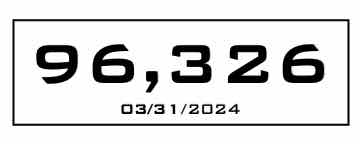
Time
To Renew Your FOA Certifications?
Special
offer - 1/3 Off Renewal
Jobs
- See
FOA Jobs
Web Page and FOA on

- The
FOA Jobs
Web Page has been updated and a new page added on Using
your FOA Training/Certification to Find the Right Job
in Fiber Optics
Where
Are The Jobs In Fiber Optics? FOA talks about all the
applications for fiber optics, what jobs involve and the
qualifications for the workers in the field in this YouTube
video.
Join
The FOA eMail Newsletter List
Want to
be notified when the FOA Newsletter is updated? Sign
up for the FOA eMail Newsletter. You can also
sign up from your cell phone: text "FOA" to 22828 (usual
text message charges apply)
Trademarks:
The FOA CFOT® (Certified Fiber Optic Technician) and
Fiber U® (the FOA online self-study program) are registered
trademarks of the FOA.
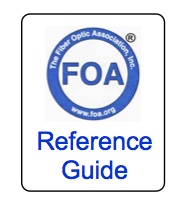
Want
to know more about fiber optics? Study
for FOA certifications? Free
Self-Study Programs are on "Fiber
U®." Looking for specific information? Here's the
largest technical reference on the web: The
FOA Online Fiber Optic Reference Guide.
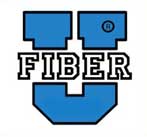
Free
online self-study programs on many fiber optics and cabling
topics are available at Fiber
U, FOA's online web-based training website.
FOA
Reference Books
Available Printed or eBooks
The
fiber book is available in Spanish and French
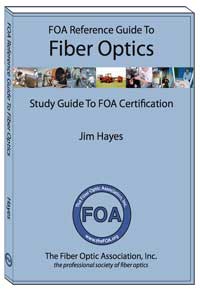
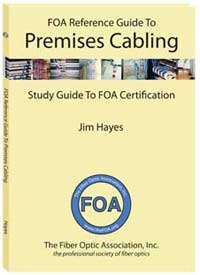
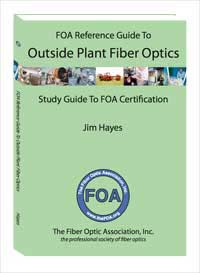
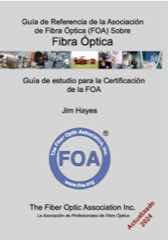
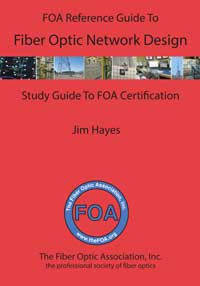
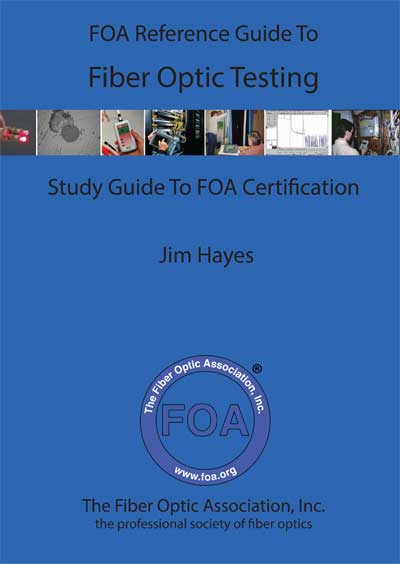
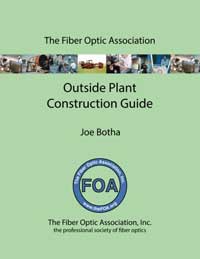
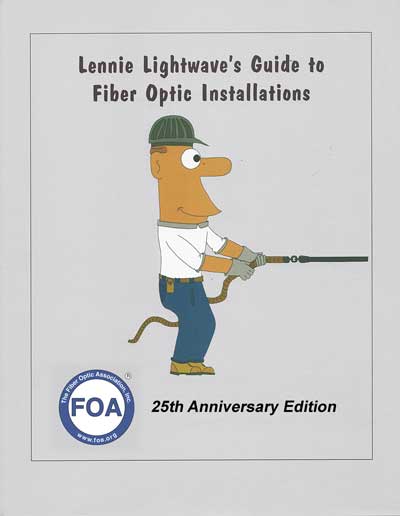
Lennie
and Uncle
Ted's Guides are now also available as free iBooks on
iTunes.
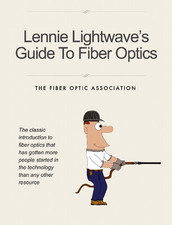
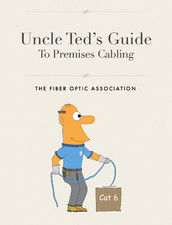
Click
on any of the books to learn more.
- Fiber
Optic Safety Poster to download and print
FOA
Videos on 
FOA
is a member of:




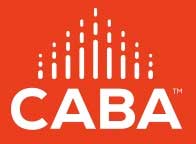
The
FOA Newsletter is edited by Jim Hayes - send your stories,
leads, ideas, comments to <jim @ foa.org>

Search
the FOA Website With DuckDuckGo
- The
Archives: Past Issues.
- Use
these links to read past issues or use FOA's
Custom Search to look for specific topics on our
website.
1/21,
2/21.
3/21, 4/21,
5/21, 6/21,
7/21, 8/21,
9/21, 10/21,
1/20,
2/20, 3/20.
4/20, 5/20,
6/20, 7/20,
8/20, 9/20,
10/20, 11/20,
12/20,
1/19,
2/19, 3/19,
4/19,
5/19, 6/19,
7/19, 8/19,
9/19, 10/19,
11/19,
12/19
1/18,
2/18, 3/18,
4/18, 5/18, 6/18,
7/18, 8/18,
9/18, 10/18,
12/18.
1/17,
2/17, 3/17,
4/17, 5/17,
6/17, 7/17,
8/17, 9/17,
10/17, 11/17,
12/17
1/16,
2/16, 3/16,
4/16,
5/16, 6/16,
7-8/16, 9/16,
10/16, 11/16,
12/16
1/15,
2/15, 3/15,
4/15, 5/15,
6/15, 7/15,
8/15, 9/15
, 10/15,
11/15 , 12/15
1/14,
2/14, 3/14,
4/14, 5/14,
6/14, 7/14,
8/14, 9/14,
10/14, 11/14,
12/14
1/13,
2/13, 3/13,
4/13, 5/13,
6/13, 7/13,
8/13, 9/13,
10/13, 11/13,
12/13
1/12
, 2/12, 3/12,
4/12, 6/12,
7/12, 8/12,
9/12, 10/12,
11/12, 12/12
1/11
, 2/11,
3/11,
4/11,
6/11, 7/11,
8/11, 9/11,
10/11, 11/11,
12/11,
1/10
, 2/10,
3/10, 4/10,
05/10,
07/10,
08/10, 09/10,
10/10,
11/10
1/09
, 2/09,
3/09, 04/09,
05/09,
07/09,
08/09, 09/09,
10/09, 11/09,
12/09
1/08
, 2/08, 3/08,
4/08, 5/08,
6/08, 7/08,
8/08, 09/08, 10/08,
11/08, 12/08
12/07 , 11/07,
10/07, 09/07,
08/07, 07/07,
06/07, 05/07,
04/07, 03/07,
2/07, 1/07
12/06
, 11/06, 10/06,
09/06, 8/06,
7/06, 6/06,
5/06, 4/06,
3/06, 2/06,
1/06,
12/05
,11/05, 10/05,
09/05, 08/05,
07/05, 6/05,
5/05, 4/05,
2/05, 01/05,
12/04
, 10/04, 9/04,
8/04, 7/04,
6/04, 5/04,
4/04, 3/04,
1/04,
12/03
, 11/03 10/03
9/03, 8/03,
7/03, 6/03,
3/03, 10/02
, 8/02, 5/02
Current Issue of FOA Newsletter
Time
To Renew Your FOA Certifications?
To keep
your FOA certifications active, you need to renew them when
they expire. Now we have a new more convenient way to renew
- an online store at Paypal - where you can quickly and
conveniently use your PayPal account or your credit card to
renew your certifications.
- You
can now renew with PayPal or a credit card
-
PayPal
is available worldwide
Join
FOA On Social Media

FOA has
four LinkedIn Groups
FOA
- official page on LinkedIn
FOA
- covers FOA, technology and jobs in the fiber optic
marketplace
FOA
Fiber Optic Training - open to all, covers fiber optic
technology and training topics
Grupo
de La Asociación de Fibra Óptica FOA (Español)
|
FOA
Newsletter - Features
October
Means Halloween - Time For A Spooky Story
 From
MIT website . From
MIT website .
A
few years ago while researching artificial intelligence
(AI), we discovered the story of "Norman," an AI created
by MIT that was frankly frightening. Since everybody wants
to tout AI for everything from self-driving cars to fiber
optic instruments, we thought Halloween was a good time to
tell you about Norman. Norman the AI was named after
Norman Bates from the Alfred Hitchcock move Psycho,
which should give you a hint about it.
Here
is how MIT describes Norman:
"Norman
is an AI that is trained to perform image captioning; a
popular deep learning method of generating a textual
description of an image. We trained Norman on image
captions from an infamous subreddit (the name is redacted
due to its graphic content) that is dedicated to document
and observe the disturbing reality of death."
Read
about Norman at the MIT website. You
may
will never trust AI again!
If
that's not scary enough for you, how about this
article from the LA Times about Mark Zuckerburg's
plans to turn Facebook into the "metaverse." Does he
not realize what the distopian novel Snowcrash - the origin
of the term metaverse - was all about? "That
engrossing novel — beloved of sci-fi fans and serious
critics alike — is set mostly in a corporate-sponsored Los
Angeles in the 21st century, when the city is no longer
part of the U.S., the currency is in free fall (people
carry quadrillion-dollar bills) and human avatars rampage
through a virtual reality simulation that’s far more like
an unfun game than like life as we know it." Or
maybe he wants everyone to live in the
Matrix.
New
Guidelines For Fiber Optic Training And Certification
When
FOA was founded in 1995, fiber optics had already been in
commercial use for about 15 years, long distance OSP
networks were still being replaced by fiber optics, metro
networks were just beginning to be converted to fiber optics
and fiber-to-the-home was a distant dream. Premises
applications were limited to a multimode LAN backbones where
speeds or distances were too much for Cat 5 as well as some
video links to remote security cameras.
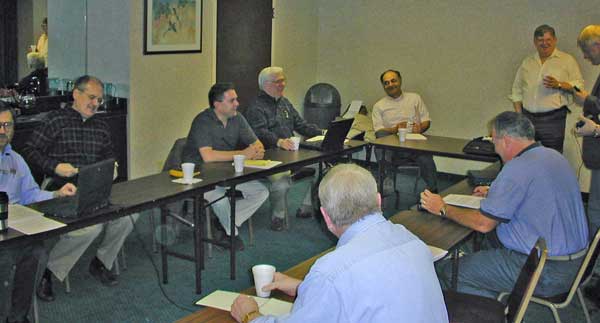
FOA founders meet to
create the CFOT certification, circa 1997
Over its first two years, a group of FOA advisors met to
create the requirements for technician certification that
became the CFOT, Certified Fiber Optic Technician. Those
requirements became the KSAs,
the knowledge, skills and abilities required to be a
certified fiber optic technician. The KSAs in turn became
the basis of developing curriculum for training and CFOT
certification testing.
In 1995, a technician was expected to be able to work with
both singlemode and multimode fiber. They needed to be
familiar with loose tube and armored OSP cables as well as zipcord
and distribution indoor cables. Splicing skills in both
mechanical and fusion splicing were needed. Termination of
singlemode fibers was done by splicing singlemode fibers to
factory-made pigtails. Multimode termination was mostly done
using adhesives and polishing, using heat-cured epoxy,
anaerobic adhesives or the 3M Hot Melt connectors. Testing
involved connector inspection and cleaning, power
measurements and optical insertion loss with a light source
and power meter. Long distance networks would also be tested
with OTDRs.
At that time, some tools and instruments like visual fault
locators, fusion splicers and OTDRs were less common and
quite expensive, often too expensive to be included in a
school’s training equipment inventory, so they were often
described in class, maybe with a video, and demonstrated by
the instructor or a salesperson.
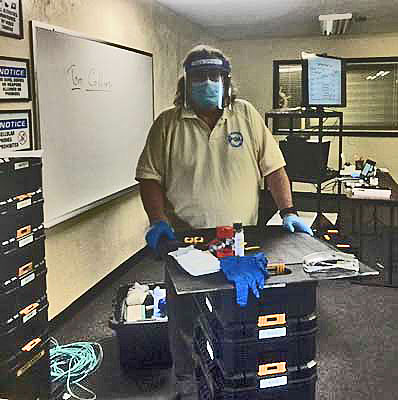
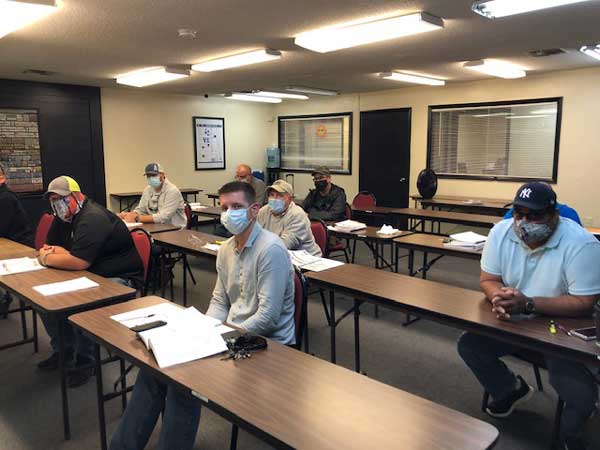
Classroom training in 2021 with pandemic rules
Over the last 25 years much has changed in fiber optics.
Network speed, driven by the growth in Internet traffic, has
become thousands of times faster, wavelength-division
multiplexing has become mainstream, FTTH (fiber-to-the-home)
enabled by PON (passive optical network) technology has
become one of top applications for fiber optics, along with
connecting wireless cell sites. The expansion of wireless
networks, traffic control systems, utility grid management,
data centers, etc. has led to lots more fiber applications.
Virtually all this growth is in singlemode fiber. Ribbon
cables, microcables and high-fiber count cables are being
used extensively. Even data centers which utilize some of
the fastest networks and have changed to singlemode to avoid
replacing cables frequently when equipment speeds are
upgraded. LANs are adopting PONs, joining DAS (cellular
networks inside buildings) to convert many premises cabling
systems to singlemode. Multimode fiber is not extinct, but
certainly an endangered species.
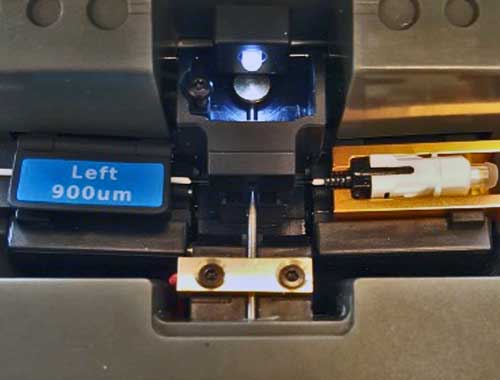
A fusion splice-on
connector
Installation techniques and components have changed too. Few
techs terminate multimode with adhesive/polish connectors in
the field anymore. First it was replaced by mechanical
splice connectors in the field, what we called
prepolished/splice connectors, but now it’s fusion SOCs –
splice-on connectors – that are becoming the termination
method of choice. They were first seen in data centers where
it’s not unusual to have 100,000+ terminations in the cable
plant. Now we have low-cost fusion splicers and SOCs that
make it the logical – and often lowest cost – termination
choice.
For testing, instruments like visual fault locators (VFLs)
have become really cheap so everyone can have one for
troubleshooting. Power meters are more automated and lower
cost, as are laser test sources. Interestingly, multimode
test sources with LEDs are in short supply as the 850 and
1300 nm LEDs they need are become harder to get because the
market for them in fiber optics has disappeared; they have
been replaced by VCSELs which are not good as test sources.
When FOA started, OTDRs were very expensive and primarily
limited in use to long distance OSP networks. Now OTDRs are
not only less expensive and capable of testing most
networks, but they are highly automated. Manufacturers tout
the ability of their OTDRs to use AI (artificial
intelligence) to set up the instrument and interpret traces.
That’s a logical approach, since the instruments are highly
complex and hard to understand, therefore few techs ever
learn how to properly use one.
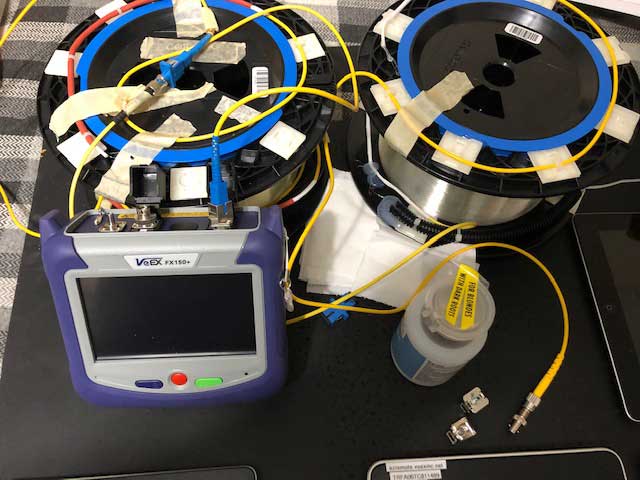
Remote automated OTDR
classroom setup with student access by smartphones
FOA believes that fiber optic technician training courses
need to reflect the real world, and as technology and
applications change, training must change also. Today’s CFOT
needs to be competent in working with singlemode fiber,
fusion splicing, SOCs and the equipment used today for
installation and testing. Hands-on labs should focus on this
current technology to ensure competent techs.
FOA is creating new course guidelines for approved schools
to follow to ensure their training fits current technician
needs. These new guidelines will be ready for use in 2022.
Fiber
U "Basic Fiber Optics" Online Self-Study Course Now In
Spanish
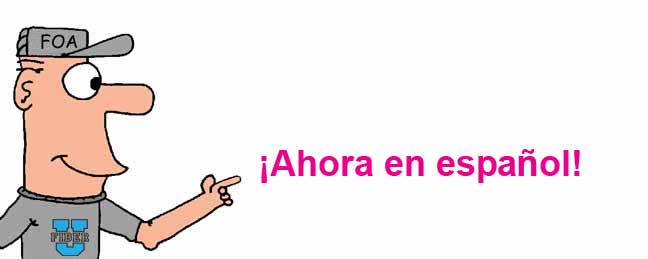
To
introduce the new Spanish Fiber U Course, the Certificate
of Completion exam is free, so please tell your
contacts about it,
FOA's
online learning site, Fiber
U, has over two dozen free self-study courses
on fiber optics and premises cabling. Unsurprisingly, the
most popular subject is the "Basic Fiber Optics" course,
used for getting started in fiber optics and as a prep
course for taking the FOA CFOT certification exam.
Now
the basic fiber optic course is available in Spanish,
using the FOA textbook in Spanish, the online Guide
section in Spanish and the ability of YouTube to translate
video captions into Spanish. The course works
exactly like the English version with 10 lessons, each
with quizzes, and an option to take a Certificate of
Completion exam.
Fiber
U Basic Fiber Optics Course In Spanish.
El
curso de autoaprendizaje en línea "Fibra óptica básica" de
Fiber U ahora en español
El
sitio de aprendizaje en línea de FOA, Fiber U, tiene más
de dos docenas de cursos de autoaprendizaje gratuitos
sobre fibra óptica y cableado de instalaciones. Como era
de esperar, el tema más popular es el curso "Fibra óptica
básica", que se utiliza para iniciarse en la fibra óptica
y como curso de preparación para realizar el examen de
certificación FOA CFOT.
Ahora
el curso básico de fibra óptica está disponible en
español, utilizando el libro de texto FOA en español, la
sección de la Guía en línea en español y la capacidad de
YouTube para traducir subtítulos de video al español. El
curso funciona exactamente como la versión en inglés con
10 lecciones, cada una con cuestionarios y una opción para
tomar un examen de Certificado de finalización.
Para
presentar el nuevo curso de español Fiber U, el examen
Certificate of Completion es gratuito, así que dígaselo
a sus contactos.
Curso
Básico de Fibra Óptica de Fibra U en español.
How
To Build Rural Broadband, Learning From History
In
the August 2021
FOA Newsletter, we published a lengthy article on
rural broadband and compared it to rural electrification
in America in the last century. Much of the comparison was
based on an article written in 1940 by a USDA economist,
Robert Beall, called "Rural
Electrification."
If you
are interested in or involved in rural broadband, we
recommend you read the article "How To Build Rural
Broadband, Learning From History" in the August
2021 FOA Newsletter and read the Beall article also.
We've
gathered all our information on FTTH from the FOA Guide and
past issues of the FOA Newsletter and edited it into an
"FTTH Handbook." This large (8.5X11")
112 page book is full of information on FTTH to help you
understand it and be more effective at implementing FTTH
projects.
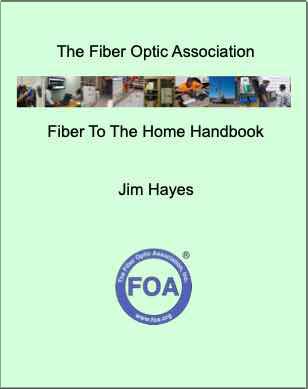
This
FTTH Handbook is not just for technicians working on FTTH
networks. It's even subtitled: For Planners, Managers,
Designers, Installers And Operators Of FTTH - Fiber To The
Home - Networks. We even added a section on planning
and managing FTTH Projects for them.
So if
you are involved in a FTTH project or are considering
starting one, this book is for you too.
The
Fiber Optic Association Fiber To The Home Handbook
is available from Amazon in print ($19.95) and Kindle
($9.95) editions.
Offer
Extended: Take the updated free Fiber U FTTH course
and the Certificate of Completion Test is also FREE
until December 31, 2021
FTTH
Updates In The FOA Guide And YouTube
FTTH
has always been the most popular application for FOA's
knowledge base. We've been working overtime to update FOA
materials covering FTTH adding and updating information
important for network owners and managers, designers,
installers and operators to be familiar with, as they can
help build FTTH networks that are better, cheaper and easier
to design, build and operate.
Read more about the FOA's FTTH
information updates
FOA/Fiber
U On-The-Job Training (OJT) Program
The
FOA Fiber U OJT program is gaining
advocates among contractors needing to train new techs
while meeting installation deadlines. This free program
for contractors and their techs combines online study
with on-the-job training to build a more competent
workforce.
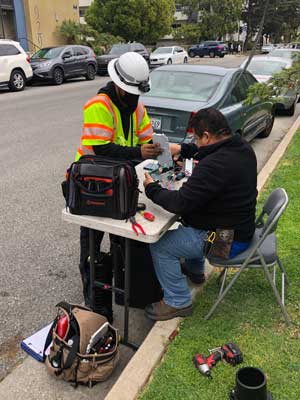
To
explain how OJT works and FOA's OJT-To-Cert program, FOA
created a short 10 minute YouTube video that explains what
OJT is, who uses it and how to use Fiber U to organize and
enhance OJT for new employees and experienced workers too.
Lecture
62: On The Job Training For Fiber Optics Using Fiber U
CFOT
Renewal Requirements
In the future, there may be a requirement for continuing
education to renew your FOA certifications. That can be
almost any fiber optic training you have received in the
last 3 years, e.g. certification classes, Fiber U courses, manufacturer's training on their
products, etc..
FOA is testing a short online course option for renewals
where you take a short Fiber U online course. If you would
like to help FOA test this option, you can save 1/3 the cost
of your renewal. Go
here to take the Fiber U CFOT Renewal Course
SPECIAL
OFFER - Help Us Test The CFOT Renewal Course and Save 1/3 Off Your Certification Renewal
Cost
FOA
Newsletter Sections
News
Technical
Worth Reading
Q&A Training/FiberU
Resoures
Safety
About
|
News
Lots
more news in Worth Reading below
|
Hello
5G, Good-bye 3G - and Maybe Your Phone and Alarm Service
Millions of people still use older smartphones (or just
plain cell phones) that only work on 3G networks, not newer
4G/LTE and certainly not 5G networks. Many other services
that use cellular services like home alarm systems and many
sensors on utilities use 3G services introduced over a
decade ago. According to the Washington
Post, next year most service providers in the US will
drop 3G service to free up radio spectrum for new 5G
networks. The schedule announced is:
Sprint
3G: Jan. 1, 2022
Sprint’s
LTE: June 30, 2022
AT&T
3G: Feb. 22, 2022
Verizon
3G: Dec. 31, 2022
T-Mobile’s
2G and 3G: Not announced
After those dates, your older phone will not work - for
voice calls, texting, Internet, etc. on the cellular network
but should still work on WiFi networks if it is so
configured. Those older phones include iPhone 5s or earlier
or Samsung Galaxy S4 or earlier. If you are still using an
older phone, go to your service provider's website or phone
manufacturer's website to determine its status.
Phones are not the only devices affected. Older Kindle units
only have 3G, many home or office alarm systems use 3G, even
truck and school bus dispatchers are still using 3G.
Most carriers are offering new phones to subscribers, often
free ones, so the conversion for phone users may not be so
bad, but the upgrades for other systems can be problematic,
especially with the problems we currently are seeing in the
supply chains for new tech products.
Best to start investing your systems now.
Read more: Washington
Post
COVID Means Remote Workers Can Live Anywhere. So Where’s
“Anywhere”?
"Some
Americans fled from cities during the pandemic, some went
the opposite way. Will cities start competing for footloose
workers instead of factories and sports teams?"
Of course, as the article points our, "anywhere" needs first
class broadband so people can work at home, so rural areas
are going to be left out. Unless they build their own
brodband systems.
Read in POLITICO: COVID
means remote workers can live anywhere. So where’s
“anywhere”?
NATE
Does Safety Training For Cell Tower Workers, Shares
Training Materials
The
Communications Infrastructure Contractors Association
announced today that it provided complimentary training
sessions to more than 350 workers across the country in
2021. NATE’s 5G- Small Cell Deployment Training Courses were
funded by a grant from the U.S. Department of Labor’s Susan
Harwood Training Grant (SH-99035-SH0) for the 2020-2021
program year.
NATE’s 2021 5G-Small Cell Deployment Training Courses
addressed fall prevention in the construction industry, with
an emphasis on small cell deployment safety practices to
keep workers safe while building and maintaining next
generation wireless sites within high traffic areas near
city roads and pedestrian pathways. The 2021 courses were
taught at 13 different locations across the U.S., including
Bloomington, Minnesota; Tulsa, Oklahoma; Omaha, Nebraska;
Anchorage, Alaska; Indianapolis, Indiana; Salt Lake City,
Utah; Tampa, Florida; Arlington, Texas; Nashville,
Tennessee; Bellevue, Washington; Denver, Colorado; Portland,
Maine; and Charleston, West Virginia.
Shared Training Materials
The 2021 5G-Small Cell Deployment Instructor Manual,
Training PowerPoint and Student Workbook resources are now
available for use by NATE members and industry stakeholders
on the Association’s website at the following links:
An
interesting data point is the material points out that 80%
of all cell site work in the future will be small cells
for 5G service.
“NATE’s 2021 5G-Small Cell Deployment Training Courses were
a great success for hundreds of technicians and industry
professionals. Through these complimentary training
sessions, NATE was able to contribute to our industry’s
reputation of promoting safety first and safety always. We
thank all of the attendees and contract trainers who made
these courses a success,” said NATE Project Manager Kimberly
Elliott.
To view NATE’s full library of Harwood Grant Training Course
Resources, including Rigger Awareness Training, Advanced
Rigging Principles Training, Wireless Rooftop Deployment
Training, and the 2021 5G-Small Cell Deployment Training,
visit
https://natehome.com/safety-education/susan-harwood-grant-courses/.
US
Conec, Fujikura form licensing agreement on high density
multi-fiber connectors

The MMC (the green connector above,) a multi-fiber connector
employing a reduced-size 1x16-fiber MT-style ferrule (TMT),
improves MPO port density by a factor of three, supporting
higher density cabling infrastructure with very low
insertion loss performance. The new TMT ferrule has now been
tooled by both US Conec and Fujikura with full
intermateability eliminating assurance of supply concerns.
This new connector design combines a modified MPO 16 fiber
ferrule in the vertical format body similar to the MDC
connector with duplex LC type ferrules (the blue connector
on the bottom above.)
For
more information, see CI&M Magazine.
New
Fiber Optic Magazine In Spanish

Todo
Fibra Optica is a new digital magazine in
Spanish for fiber optics in Latin America. Jose Enriquez,
editor of Todo
Fibra Optic magazine has many years
experience in the fiber optic industry so he knows the
industry well. FOA will be working with him to share our
extensive technical materials in Spanish.
Latest Issue features FTTH Todo
Fibra Optica
Contact:
José Manuel Enriquez Mora, Editor
Todo Fibra Optica LLC
https://todofibraoptica.com/revista-ediciones/
+52 222 302 8224
jose.enriquez@todofibraoptica.com
|
Technical
On
fiber optic technology, standards, equipment,
installation, etc.
The
FOA Update Page
covers all the new technology and applications we covered
in this newsletter recently. Now you can review all that
new tech at once.

Want
to know more about fiber optics? Study
for FOA certifications? Free
Self-Study Programs are on "Fiber
U®." Looking for specific information? Here's the
largest technical reference on the web: The
FOA Online Fiber Optic Reference Guide.
|
Not
Just At Halloween Time, This Scares FOA All Year Long
From a training program instructor guide:
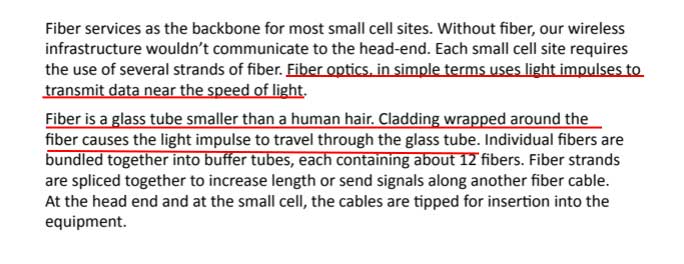
Duh, light can only travel at the speed of light, of course,
but the speed of light depends on the material the light is
traveling in, e.g. glass or air. And the core of the fiber
is not a tube, it's not hollow!
And you might remember FOA's many articles
about how drawings of optical fiber on the Internet
have left too many techs with the opinion that you strip the
cladding off the fiber core when you strip fiber, a
misconception that causes 25% to miss the questions about
stripping fiber on the FOA certification exams. Well, some
companies still show fiber like this slide below:
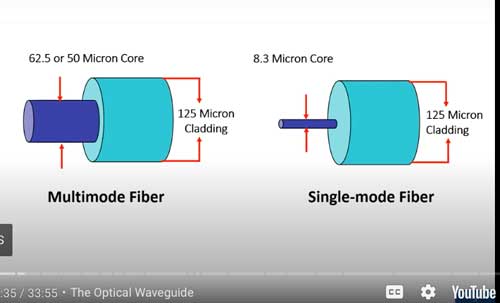
Please, let's all change these diagrams to look like this
FOA drawing below so techs know the core and cladding are
just one solid strand of glass!
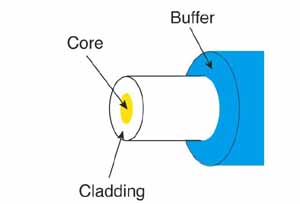
Evolution
of fiber-optic transmission: A history of performance
improvements
Through
genius-level accomplishments, multimode fiber evolved to
support speeds of 100 Gbits/sec.
Eric Pearson in CI&M
Eric Pearson, a co-founder of FOA and one of the
most experienced and respected teachers of fiber optics, has written an
interesting article in Cabling Installation &
Maintenance magazine on the early history of fiber optics.
Eric focuses on the development of multimode fiber. The
article includes this amazing table that shows how fiber has
evolved in its ~45 year history:

Eric
covers the technical developments that created today's
multimode fiber and it's a fascinating story.
Read
more in CI&M.
Reflectance
or Return Loss; OptoTest Explains The Causes (Sept 2021)
Mate
two fibers with connectors and you expect to see some
reflectance or return loss. Reflectance and return loss at a
fiber joint are actually nearly the same thing but with
opposite signs, which, like some other fiber parameters that
are expressed in dB, can be quite confusing. Sometimes
return loss for a cable plant includes reflectance from
joints plus the integrated backscatter from the fiber,
another source of confusion.
This paper goes into great detail at what happens at a fiber
joint and includes a much more comprehensive analysis than a
typical explanation. It's a very interesting paper for those
who enjoy the really in-depth explanation of simple topics.
Download
a copy here.
Try
The FOA's Online Loss Budget Calculator
FOA has
written many articles about loss budgets, something everyone
involved in fiber optics needs to know and needs to know how
to calculate. We've created a online Loss Budget Calculator
that does the work for you. Just input your cable plant data
and it calculates the loss budget. It works on any device,
especially smartphones and tablets for field use and even
allows printing the results.
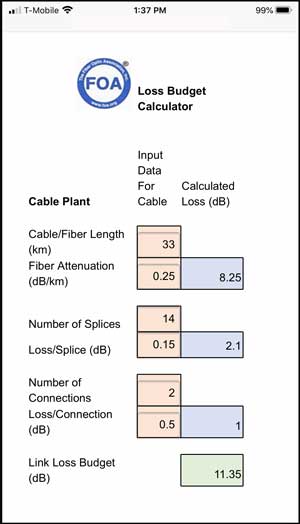
Bookmark
this page (especially on your smartphone): FOA
Loss Budget Calculator Online
|
Worth
Reading
Each
month we read hundreds of newsletters and online articles.
These are the ones we think you will find "worth reading."
|
Worth
Reading (And Watching):
October
2021
Is
OM5 Fiber a Good Solution for the Data Center? Six
reasons why the answer is NO from Siemon.
Mapping
Broadband Access With Garbage Trucks, and Other Innovative
Municipal Initiatives in Shreveport, Louisiana -
Episode 19 of Connect This! from Community Broadband
Networks
1983
Video of AT&T's First Test Of A Submarine Cable System
From the AT&T
Tech Channel archives (worth exploring!)
Richard
Epworth's Optical Fiber History from his work at STL
from 1966 with Charles Kao.
September
2021
How
Much Does A Cable Installer Earn?
Salary.com
Communications
Systems Grounding Rules: Article 800 provides specific
requirements
by Michael
Johnston, NECA Executive Director of Standards and
Safety in EC Magazine
Essential
Technologies for Intelligent Transportation Systems,
Black & Veatch (download PDF)
In
2021, the number of states preserving legal barriers to
municipal broadband networks dropped from 19 states to
17 states, ILSR Community Networks
New
Fiber Optic Magazine In Spanish

Todo
Fibra Optica is a new digital magazine in
Spanish for fiber optics in Latin America. Jose Enriquez,
editor of Todo
Fibra Optic magazine has many years
experience in the fiber optic industry so he knows the
industry well. FOA will be working with him to share our
extensive technical materials in Spanish.
Latest Issue features FTTH Todo
Fibra Optica
Contact:
José Manuel Enriquez Mora, Editor
Todo Fibra Optica LLC
https://todofibraoptica.com/revista-ediciones/
+52 222 302 8224
jose.enriquez@todofibraoptica.com
How
To Build Rural Broadband, Learning From History
In
the August 2021 FOA Newsletter, we published a lengthy
article on rural broadband and compared it to rural
electrification in America in the last century. Much of
the comparison was based on an article written in 1940 by
a USDA economist, Robert Beall, called "Rural
Electrification."
If you
are interested in or involved in rural broadband, we
recommend you read the article "How To Build Rural
Broadband, Learning From History" in the August
2021 FOA Newsletter and read the Beall article also.
Google
Fiber Drops TV Service In Austin and Atlanta,
Concentrates on Internet Austin
American-Statesman
August
2021
US
Broadband Coverage By Service Provider from the FCC
Six
Community Broadband Networks Demonstrate Diversity of
Approaches to Connectivity Challenges ILSR Community
Networks.
Prysmian
beefing up North American fiber cable production,
Lightwave
New
Hampshire Cooperative Expands FTTH Network ILSR
Community Networks
Governor
Parson Announces $400 Million Plan To Improve Broadband
Infrastructure In Missouri
Governor
Newsom (CA) Signs Historic Broadband Legislation to Help
Bridge Digital Divide
Alaska
Communications supplies undersea fiber for earthquake
monitoring - Lightwave
Ciena's
Submarine Cable Handbooks (4 to download)
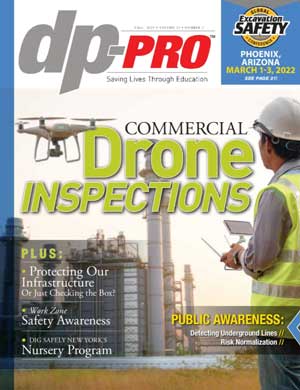
The
Fall Issue of dP-PRO, the "call before you dig" magazine,
is online.
Webinars
(On Demand)
Tellabs'
RDOF and the Tellabs FlexSym OLT-mini webcast
plus download the slides
The OLT-mini is a low line count, small form factor and
environmentally hardened OLT designed to keep deployment
costs down, which makes it ideal for RDOF projects.
(Tellabs mimiOLT was covered in the June FOA Newsletter
about rural FTTH.)
The
African Submarine Networking Seascape: A New and
Emerging Market
TeleGeography/Ciena/MainOne
With
this lightning-fast growth rate and eight new cables in
the works, this is an emerging market with big network
infrastructure projects to watch.
July
2021
Community
Networks notes that community-owned and operated
broadband networks have topped PCMag's annual "Fastest
ISPs in America" analysis for three years running,
poking holes in arguments that modern network infrastructure
is too complicated or costly for local communities to build
and operate successfully.
Municipal
Broadband Advocates Win Major Victory in Ohio as
the lawmakers turn down an amendment to the state budget
that would ban municipal broadband networks. Community
Networks
Technical
Standards For OSP Installations from the
Communications and Information Technology Commission of
Saudi Arabia. Very thorough, easily understood. Courtesy FOA
instructor Tom Collins.
Scenes
From California’s Sugar Fire - The Atlantic.
Look at photo #7 and imagine your aerial cable under those
conditions.
Knoxville
Utilities Board Set To Build Largest Municipal Fiber
Network In The Nation The Knoxville City Council
unanimously approved a proposal to build a fiber-to-the-home
(FTTH) network. Network construction is expected to cost
$702 million and take seven to 10 years to build out,
reaching 210,000 households. Community Networks.
Muni
Broadband Wave Washes Across Massachusetts
Muni Broadband Wave Washes Across Massachusetts. Community
Networks.
Worth
Reading: June 2021
Lightwave
Magazine is back after many years as only a
online newsletter.
To
Fill Millions of Open Jobs, Many Workers Need More Than
Skills (NYTimes) Helping people land good jobs
with career paths takes more than skills training, labor
experts say. Coaching, mentoring and other assistance are
also needed.
Traditional
Federal Money Drying Up For Rural Broadband “We’re
taxing the telephone networks to pay for the broadband
network,” said Brendan Carr, a Republican member of the
Federal Communications Commission. “That’s like taxing
horseshoes to pay for highways.” Read
more from Bloomberg.
Worth
Reading: May 2021
China
starts large-scale testing of its internet of the future
China launched a large-scale experimental network in Beijing
on Tuesday to test the future of internet technology over
the next five to 10 years.Headquartered at Tsinghua
University, the “future internet technology infrastructure”
connects 40 of the…
Read in Apple News from South
China Morning Post: https://apple.news/A64XeyG2gRuGB1E63LAeqjw
Ransomware
attack leads to shutdown of major U.S. pipeline system
Washington Post. The attack on top U.S.
operator Colonial Pipeline appears to have been carried out
by an Eastern European-based criminal gang. Are you sure
you want that critical system connected to the Internet?
NeoPhotonics
Announces Cumulative Shipments of 2 Million Ultra-Narrow
Linewidth Lasers for Coherent Transmission Systems
That's a lot of coherent systems!
The
federal government is rolling out record amounts of
broadband funding. It could be just the beginning.
The federal government is starting to disburse more than $10
billion to bring more Americans affordable Internet.
Washington Post
Communications
Systems Grounding Rules: Article 800 provides specific
requirements by
Michael
Johnston, NECA Executive Director of Standards and
Safetyin EC Magazine
Lightwave
Magazine Is Back!
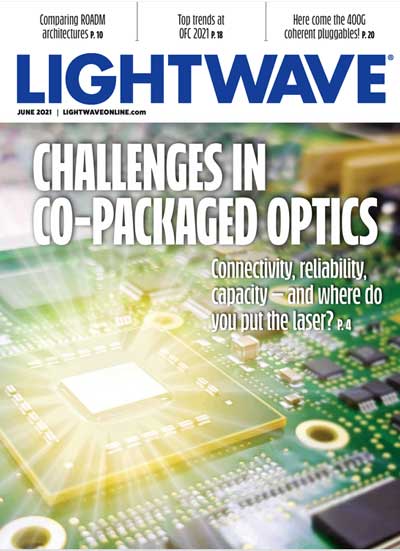
Lightwave
Magazine is back after many years as only a online
newsletter. Lightwave was started in 1984 by Howard
Rausch, a veteran newsman, a gentleman and a scholar!
(JH) We reported on the demise of the printed version of
Lightwave in the FOA
Newsletter of March 2009. Lightwave is back as a
digital magazine, perfect for the times, and still headed by
Editorial Director Stephen Hardy, a veteran of the fiber
optic community with great in-dept knowledge of the
technology, companies and people who make fiber optics what
it is today. Lightwave's
comprehensive website continues too. All very worthwhile
reading.
TeleGeography's
New Submarine Cable Map
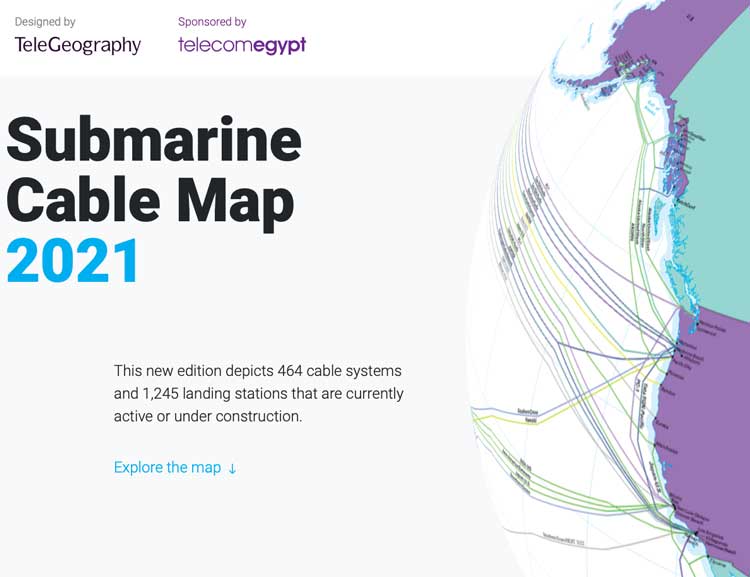
TeleGeography's
new 2021 Submarine Cable Map is packed with new
cables and stats. Not to mention the new graphics and
FAQs! This edition is loaded with trivia on cable
suppliers, content providers, deployments, fiber, and
more.
The 2021 Submarine Cable Map depicts 464 cables and 1,245
landing stations; 428 cables are active and 36 are
planned.
Of the planned cables, 19 were not depicted in our 2020
edition. (The combined length of those 19 new planned
cables is 103,348 km!)
Statistics
on US Labor In Telecom
Eric
Pearson sent us some links to US Bureau of Labor Statistics
data on the US Workforce. Granted it was updated in May
2019, but has lots of useful and interesting information on
where the work is and what workers are paid.
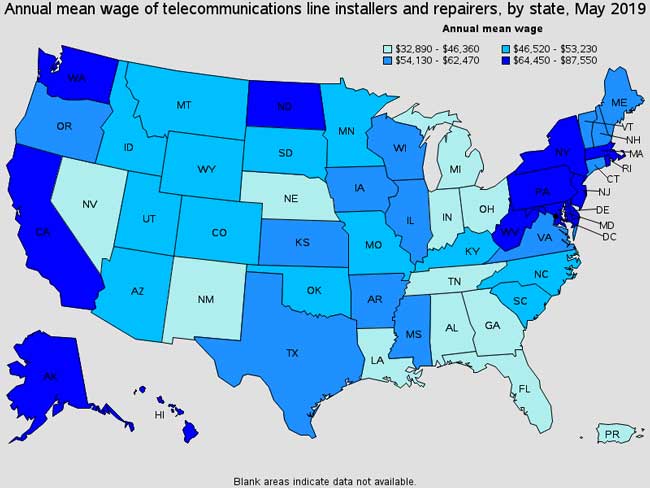
Read
the reports here:
Telecommunications
Line Installers and Repairers (Install and
repair telecommunications cable, including fiber optics.
Telecommunications
Equipment Installers and Repairers (Install,
set up, rearrange, or remove switching, distribution,
routing, and dialing equipment used in central offices or
headends. Service or repair telephone, cable television,
Internet, and other communications equipment on customers’
property. May install communications equipment or
communications wiring in buildings.
1995-2020
- FOA's 25th Anniversary!
As part
of celebrating 25 years of serving the fiber optic industry
as its primary source of technical information and
independent certifying body, FOA thought it appropriate to
create a short history of the organization and how it has
developed to help the fiber optic industry. We also
wanted to recognize the contributions many people have made
to the organization over the years that made FOA what it is
today.
The FOA history is now archived on the FOA website where
you can read it anytime or link to it.
Updated
info - dB, total internal reflection and science projects,
Worth
Reading - News Summary - Past Links Worth Repeating
Recycling
Fiber Optic Cable - Contact:
Steve Maginnis
LD4Recycle/ CommuniCom Recycling
(Visit
website)
sm@LD4Recycle.com
803.371.5436
Communications
Systems Grounding Rules: NEC Article 800
provides specific requirements -
Electrical Contractor Magazine
Sumitomo's
Ribbon Splicing Guide - download from
one of the leaders in splicing.
"Who
Lost Lucent?: The Decline of America's Telecom
Equipment Industry"
This is a MUST READ for managers in telecom or any
industry!
This
long and well-researched and annotated article in American
Affairs Journal should be mandatory reading for every
high level manager in a telecom company - or any other
company for that matter. To summarize the article, today,
America has no major telecom equipment company and fears the
major suppliers of equipment who are all foreign, especially
the Huawei from China. This article explains how America got
into this deplorable state.
OFS
also has an excellent website and blog of tech articles
worth browsing.
IEC
60050 - International Electrotechnical Vocabulary -
An extensive dictionary for fiber optics in English and
French. Highly technical - this is one definition: "mode -
one solution of Maxwell's equations, representing an
electromagnetic field in a certain space domain and
belonging to a family of independent solutions defined by
specified boundary conditions"
If
you are interested in restoration - aren't we all? -
you should also read this article in dpPro magazine by
FOA President Jim Hayes: Damage
Protection Requies Looking Overheas As Well As
Underground - dpPRO Magazine - about the
problems with aerial cables. His previous article for
the magazine was New
Techniques for Fiber Optic Installation.
How
much fiber optic cable is manufactured each year?
CRU Reports - unsurprisingly China is by far the largest
market today
The
Institute
for Local Self-Reliance weekly newsletter has
lots of interesting articles and links.
The Open Technology Institute at New America just
published “The
Cost of Connectivity 2020,”
US
Ignite and Altman Solon issued “Broadband
Models for Unserved and Underserved Communities”
Universal
access to broadband is a cornerstone to a strong
economy, Achieving universal access will require
community partnerships. by Alfreda
B. Norman, Sr. VP, Federal Reserve Bank of Dallas
FIBER
TO THE FARM: The co-ops that electrified
Depression-era farms are now building rural internet. Be
sure to check out the high-tech equine installation
equipment.
Next
Century Cities Newsletter - News from cities
around the US including Detroit and New York plus small
Infrastructure
Get Some Respect, NY TImes "On Tech"
"The magic of the internet requires a lot of very boring
stuff behind the scenes. "
DIRT
Report On Damage To Utilities
Common Ground Alliance (CGA) annual DIRT report provides a
summary and analysis of the events submitted into CGA’s
Damage Information Reporting Tool (DIRT) for the year
2018. The complete report is available for download
here. In addition, there is an interactive
dashboard that allows users to filter the data
more by factors contributing to damages.
Structured
Cabling News - a website and weekly
newsletter about cabling.
The
Internet Master Plan for New York City.
The New York City Internet Master Plan is a
comprehensive framework for the infrastructure and
services that provide connectivity to New York City
residents and businesses. This Master Plan will guide
City actions and public-private partnerships to
transform New Yorkers’ access to this essential
infrastructure for generations to come.
Fiber
Trivia From Corning.
The
Future Of Work Is Skills - So Stop Worrying About
Degrees - The
reality is the future of work is about skills, not just
degrees. (FOA Newsletter Feb 2020)
The
job market is hot. So why are half of U.S. grads
missing out?
VIAVI
Books On Fiber Optic Testing (2 volumes) - They're back!
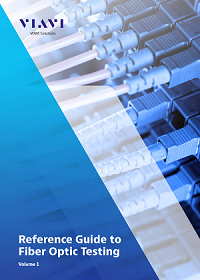
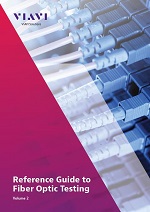
Besides
the FOA reference materials, two JDSU/VIAVI textbooks,
Reference Guide to Fiber Optic Testing, Volumes 1 and
2, were used as references for some of the FOA courses
and are recommended for instructors and students. The books
are available from VIAVI as eBooks and the everyone should
download them and recommend them to others.Download yours
now. Volume
1. Volume
2. Viavi Books
Guidebook
To MPO Testing OptoTest
offers this complete guide to MTP®/MPO testing. In this
guide, you will learn all there is to know about the
different test methods, equipment options,
troubleshooting, and best maintenance practices to ensure
that you have the best testing experience.
Go
here to download the book.
50th
Anniversary of The Development of Low Loss Fibers
A history of the development of low loss fiber, a
fascinating story by Jeff Hecht on the OSA (Optical Society
of America) website.
How
OFS Makes Fiber
Interesting YouTube video on how fiber is made. Perhaps a
little too much "show biz" but fascinating. If you have ever
seen fiber manufacture, look at this video. You will be
amazed at how big preforms have become!
How
Nexans Makes Copper Cables - compare the process
to fiber - don't most of the machines look similar?
The
True Cost of Telco Damages (what backhoe fade or
target practice can cost)
Rural
Electric Cooperatives: Pole Attachment Policies and
Issues, June 2019.
Clearfield-FOA
Certification Training Clearfield is now
offering their customers an FOA
CERTIFICATION course. This course provides
a basic understanding of fiber optic technology, as well
as Clearfield product knowledge and how Clearfield’s
integrated product systems work together in a fiber
network.
Substandard
Contractors - Fiber Optic Knowledge Doesn't Always
Trickle Down (EC Mag)
Another
Source Of Articles On Fiber
FOA
President and editor of this newsletter Jim Hayes has also
been writing a column in Electrical
Contractor Magazine for almost 20 years now.
Electrical contractors do lots of fiber work and this column
has covered some topics they are interested in including
installation processes, network design, fiber applications
and a lengthy series on dark fiber - what it is, how's its
used and how it benefits the growth of communication. A
recent web site redesign makes it easier to browse all these
articles - just go to http://www.ecmag.com/contributing-authors/jim-hayes
and you can see all of them. |
Q&A
Tech
Questions/Comments From FOA Newsletter Readers Worth
Repeating
The
FOA Fiber FAQs
Page (FAQs = frequently asked questions) gathers
up questions readers have asked us (which first ran in
this newsletter) and adds tech topics of general
interest.
|
Good
Question!
The
FOA Fiber FAQs
Page (FAQ s = frequently asked questions) gathers
up questions readers have asked us and adds tech topics
of general interest.
Questions
From FOA Newsletter Readers
October 2021
Fusion Splicing Regular And Bend-Insensitive Singlemode
Fiber
Q: Would
fusion splicing single mode bend insensitive to standard
fiber with same core cause a numerical aperture mismatch? We
are seeing loss but it’s hard to tell from what. Going from
a drop to BI inside cabling. Any direction is appreciated!
A: There
is a lot of controversy in this area and has been for some
time. The issue is mode field diameter(MFD)
differences between regular and bend-insensitive (BI) fiber
caused by the low index trenches around the core that are
used to limit bend insensitivity.
Some (maybe most) manufacturers make BI SMF to match MFD of
their regular SMF, since a common use is splicing BI SMF
pigtails onto regular SMF. With so much BI SMF fiber being
used in microcables and high fiber count cables, the
opposite situation could be an issue also.
Another factor at play here is the fusion splicing program.
The different structures of the fiber may need special
programming in the fusion splicer to get heat and feed right
for the two different fibers.
FOA hopes to have some independent data on this topic soon.
FOA Master Instructor Joe Botha has done tests before on
splicing dissimilar fibers when BI fiber first became
available (read
the report here) and has planned a more
extensive set of tests to update that data for more recent
fibers soon.
Connector
Mating Adapter Loss
Q: When looking in data sheets on duplex adapters,
it’s telling me that it has a Insertion Loss of about 0,2dB.
Is that common? Only thought it was the connector that had a
loss.
A: Technically, a
single connector or mating adapter does not have any loss.
It’s not “connector loss” but “connection loss” defined as
the insertion loss when two connectors are mated, and for
most connectors that requires a 3rd component, a mating
adapter to align the ferrules. (Some connectors like MPOs
have their own alignment mechanism so the mating adapter
merely holds the two connectors - one with pins and one with
holes - together.)
The connector manufacturer’s specification for “Connector
loss” is the loss of their connector mating to a reference
connector with a mating adapter. Connectors are graded in
ISO/IEC standards, but not TIA, and the best connectors are
~0.2dB loss when mated to another of the same grade.
If a mating adapter manufacturer is quoting loss, one
assumes they mean their adapter with two of the best
connectors will have a connection loss of 0.2dB.
Mating adapters for 2.5mm ferrule connectors - FC, SC and ST
- have a split sleeve alignment bushing that is the critical
element. They have been made with molded glass-filled
plastic, phosphor bronze and ceramic. In our
opinion/experience, the plastic ones are only good for
multimode fiber and wear out in ~10 insertions, discoloring
connector ferrules and leaving dust scraped off the plastic
on the ferrule ends. The metal ones are good for SM or MM
and hundreds of insertions, but they tend to wear and leave
marks on the ceramic ferrules. The ceramic ones are
recommended for SM and for testing as they work best and
last practically forever.
August 2021
Height
Of Aerial Fiber Optic Cables
Q: Is there a code standard for how high from the
ground a for a fiber optic cable running through a
residential yard? if yes, please provide the standard or
point me to the standard.
A: If we go by NEC 2020, the height is 8 feet,above
roofs. with this qualifier. No driveways just over
grass. Art /section 770.44 B. Also 800.44 A 4 states 12
inches between electric service and Fiber optic cable. But
service has to be 12 feet at house so I would say 11 feet
above grass. If driveway is there, Residential 15 feet for
service, electrical, so fiber at 14 feet.
Identifying Users On A PON Network
Q: How or what testing tool or technique can I use to
verify whether there is a live customer w/ONT working on any
fiber i may select @ a splice enclosure prior to getting
further down the cable and to the MST service
terminal. All our fibers have light on them leaving the CO
so when we go into a splice enclosure to pick a fiber to
connect a drop to, to service a home, they are usually all
lit up in that enclosure.
A: The simple answer for a tool or technique that can
tell you if a customer is connected on an output of a PON
splitter is “documentation.” If you know where each fiber is
connected going downstream. Then the IT person who programs
users into the system can tell you if that fiber is
connected to a customer. There is a possibility that there
is a test solution. Have you ever heard of a “fiber
identifier”? It’s a gadget that can tell if there is signal
in a fiber and some can identify the direction it comes
from. What I don’t know if the unit can somehow indicate
bi-directional traffic. Nobody we contacted seems to know
either.
June 2021
Using FOA Resources To Learn
Q: I've been working in this industry since October
2018. Started as a Field Service Engineer fielding aerial
and underground. I have since become a Project Engineer
working with aerial OSP and ISP. What is the catch? This is
just an amazing platform to continue with for me. It's been
all about the OJT, but this is just a great resource for me
now and the YouTube videos allow me to watch your videos
from today as well as 10 plus years ago.
How can I use the website to benefit me? Where should I
start? I just want to watch every YouTube video before I
focus on your website, but maybe I want to do both,
Suggestions?
A: FOA has three options to get information:
FOA Guide
is the FOA knowledgebase, ~1000 pages of technical material
generated by the FOA technical advisors around the world.
The link is to the Table of Contents where you can find
pages on just about any topic in fiber optics from fiber to
coherent communications. Every year about 1/2 million users
download about 4 million pages!
Linked from the Guide above is the FOA YouTube channel which
you have found. It’s over 100 videos, about 60 lectures on
tech topics, where you can get very familiar with my voice -
I’m the lecturer. The FOA videos are listed here:
https://foa.org/tech/ref/contents.html#YT
You can also go to the FOA channel on YouTube: go to the FOA
Channel “thefoainc"
Fiber U
is our free online learning site. We started online learning
at Fiber U in 1997. Today it has over two dozen free online
self-study courses that lead to a Fiber U Certificate of
Completion. Courses include Basics of Fiber Optics with an
accompanying Basic Skills Lab, where many people start,
especially if they are aiming at FOA CFOT certification, the
primary certification from FOA.
We also have basic courses on premises cabling, OSP
construction and installation, splicing, termination,
testing, network design and about a dozen that cover
specific applications. The FTTH course was developed when
Verizon approached FOA in 2005/6 to help with the rollout of
FiOS - training and recruiting installers.
FOA”s problem is we have too much “stuff”! It’s so much it
can be confusing on where to start. We generally recommend
going to Fiber U and picking courses that are important to
your work. Those courses will lead you to the appropriate
pages in the FOA Guide and videos on YouTube.
But we are always here to help. Tell us what you are
interested in and we can point you to the right places
(often including websites of manufacturers of products who
also have immense amounts of applications information.)
We’re
now working on a “Roadmap” to help people find their way,
but that will take time, there are a lot of paths to
connect!
Slow
Internet After Conversion From DSL To FIber
Q: Could you please help me understand why I am
getting a slow connection (the same as when I was using
anADSL box and sometimes even a bit slower) while having a
fiber optic connection to my home (FTTH then RJ45 between
wall & iMac)?
I am using an old iMac from early 2009 but the cable needed
is a regular RJ45, so I do not see why it should not take
the high speed connection...
As a matter of fact, it still takes several seconds (3 to 6
or even 12) for some pages to load...
A:There are several possible reasons your Internet is
slow loading pages.
The fiber optic link to your residence may have little or
nothing to do with the speed you see. If you use a speed
test to check the speed of the connection, it’s probably
going to show faster speeds, but it generally only tests the
connection to your ISP - Internet Service Provider - not to
the Internet or a remote data center. The actual
connection to the data center sending you the pages you
request may be hundreds or thousands of km long and through
many switches, so that could affect the speeds.
The major problem we see is the speed of the connection of
your ISP to the Internet. If they have many subscribers, the
“traffic jam” is at their connection. This is generally easy
to see over the time of day. In the evening when many people
are streaming TV or movies, it sends to get much slower,
just like automobile traffic during rush hour. At times when
fewer people are online, speeds will be faster.
We have exactly the same problem here in Santa Monica. Our
Internet over a cable modem tests at 100-200 Mb/s but pages
are slow loading because so many people are on the network
at once.
However, I also suspect your 12 year old iMac. The
typical web page is more complex than a decade ago and may
contain hundreds of files including graphics that have to be
downloaded and assembled for you to see the page.Newer
computers are much faster and software is more efficient at
handling large pages.
Seal End Of Cable
Q: For aerial OSP cable, are there any problems with
leaving the end of the cable open or should it always be put
into a closure of some kind?
A: The open end of the cable allows moisture to get
into the cable and can be a problem.
I see several scenarios here. If the cable is installed and
waiting for splicing, it could be a matter of time. If the
work is to be done soon - a week or two - leaving it open is
OK, but if the time is longer or you prefer being careful,
just seal the end of the cable by wrapping it with plastic
electrical tape. The end will be opened up for
splicing; about 2m of cable needs to be stripped to
splice it, so a few days exposure is OK, but long term we’d
recommend a simple tape seal, the way manufacturers do when
shipping cable on a reel.

The
word on the "Dig Once" program is getting out - FOA is
getting calls from cities asking us for information and
advice. Here are some links:
The DoT page on the administration’s Executive Order: http://www.fhwa.dot.gov/policy/otps/exeorder.cfm
From the Council of State governments: http://www.csg.org/pubs/capitolideas/enews/cs41_1.aspx
From the city of San Francisco: http://sfgov.org/dt/dig-once
An article about Dakota County, MN: https://muninetworks.org/tags/tags/dig-once
And
the one to download and hand out:
A “How To” Guide from The Global Connect Initiative: https://share.america.gov/wp-content/uploads/2016/04/6.-GCI-Dig-Once.pdf
Is
There A Standard For Fiber Optic Installation?
Another
question we get often is "Is there a standard for fiber
optic installation." The answer is yes, but not from the
usual standards groups you might expect. Over 20 years ago,
the National Electrical Contractors Association (NECA) asked
FOA to help create a standard for installation. That
standard, ANSI/NECA/FOA-301 has been updated three times
already and is about ready for another update.
Unlike most of those groups who charge you a fortune for
standards, FOA covers the cost so ANSI/NECA/FOA-301
is available free from FOA.
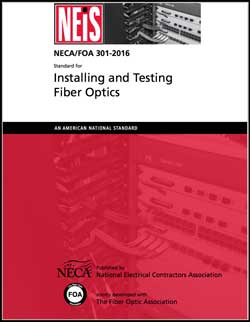
Download
your free copy of ANSI/NECA/FOA-301
here (PDF)
Older
questions are now available here.
|
Training /
FiberU
News and resources to help you learn more and stay
updated.
Find
a listing of all the FOA-Approved schools here.

Free
online self-study programs on many fiber optics
and cabling topics are available at Fiber
U, FOA's online web-based training website.
Free
online training at Fiber U
The
FOA has >100 videos on  |
FOA
Network Of Approved Schools Continues To Grow
The
need for more fiber optic networks to support broadband and
wireless/5G networks has led to a strong demand for more
trained and FOA-certified techs, and that has led to a
demand for more training organizations. FOA has been adding
new schools and certifying new instructors to meet the
demand. Here are two new schools this month and more added
recently.
New
Schools added in September-October 2021:
School 396 Optconn, Boston, MA
School 395 Fiber
Wizards (Knowledge on Demand LLC)
Schools
added recently:
School
393, Carolina's Solution Group
School
394, Tri-County Career Center, Nelsonville, Ohio
School
388: Global Com of Sterling, Virginia, USA
School
389. CWA-JATC Telecom Training Center, San Jose, CA
School
390 Northern Allied Communications, Nespelem, WA
School
391 Lewis-Clark State College, Lewiston, ID
School
392 Wallace Community College, Dothan, AL
FOA/Fiber
U On-The-Job Training (OJT) Program
The
FOA Fiber U OJT program combines online study at Fiber U
with OJT with mentoring by experienced co-workers and
their supervisor to help new employees
develop into FOA-certified technicians in only one
year. Upon completion of this
program, the trainee will be prepared to take the exam for
the FOA CFOT (Certified Fiber Optic Technician) and/or CPCT
(Certified Premises Cabling Technician), the most widely
recognized fiber optic and premises cabling certifications
in the industry.

The
FOA
Fiber U “OJT-To-Cert” program includes
both fiber optics and premises cabling (copper, fiber &
wireless), so it covers techs working in both outside plant
and premises jobs.
Like
other FOA programs, the OJT-To-Cert program is free. If
you and/or your company is interested in the FOA
OJT-To-Cert program,
contact FOA.
To
explain how OJT works and FOA's OJT-To-Cert program, FOA
created a short 10 minute YouTube video that explains what
OJT is, who uses it and how to use Fiber U to organize and
enhance OJT for new employees and experienced workers too.
Lecture
62: On The Job Training For Fiber Optics Using Fiber U
FTTH
Updates In The FOA Guide And YouTube
FTTH
has always been the most popular application for FOA's
knowledge base. The subject is a major topic in the FOA
Guide and the Fiber U FTTH course has been very popular.
Many of our FOA approved schools use the FOA curriculum and
teach combination courses for CFOT/CFOS/H for techs and
CFOS/D (design) and CFOS/H for designers.
As with all topics in the FOA knowledgebase, we try to keep
up to date, incorporating the latest developments and trends
to ensure our materials are most useful to the industry.
Here's what we've created and updated recently:
FOA
Guide: Added a section on FTTH Network Design, updated
sections on Architecture and PONs (including 10G)
FOA's
YouTube Channel: Added 4 new FTTH videos on Network
Architecture, PONs, Network Design and Installation/Test.
How Can These New Materials Benefit You?
- Update
your knowledge: Even if you already have your
CFOS/H or have completed the FTTx self-study course on
Fiber U, we recommend you go back to the Fiber U course
on FTTH Network Design and take the architecture, PON
and Design lesson again.
- Getting
Started in FTTH: We recommend buying a copy
of FOA's
FTTH Handbook or going straight to
the Fiber
U FTTx self-study course which will get you
started right most quickly.
- Learning
More About Special Topics in FTTH: Read
the new/updated pages on the FOA Guide and watch the
new videos.
- Designing
FTTH Networks: If you are involved in the design
of FTTH networks but new to fiber optics, start with
the Fiber U Fiber
Optic Network Design course then take the Fiber
U FTTx self-study course.
- Teaching
FTTH Courses: If you are already an FOA-approved
school, download the new updated curriculum. Not an FOA
School? Contact FOA.
- Employee
OJT
What's Next?
Our
next project is to use these new/updated training materials
to help train more techs.
- Training
at FOA approved schools: We will of course
work through the FOA network of approved schools, many
of which already teach FTTH courses.
- OJT
(On the job training): We will also be
reaching out to network owners and managers and their
contractors who can use all these free materials for OJT
- on the job training - for their workers.
Fiber
U MiniCourses

Got
An Hour Or Less? Learn Something New About Fiber Optics.
FOA has
introduced a new type of Fiber
U
course, the MiniCourse, a free online course you could take
in a short time, perhaps as you ate lunch at your desk or
took a coffee break. The
topics of these courses should explain what they are about,
and these are all very important topics to fiber optic
techs.
Fiber
Optics In Communications
How
Optical Fiber Works
Fiber
Optic Network Restoration
Fiber
Optic Connector Identification
Fiber
U Color Codes
The
Mysterious dB of Fiber Optics
Fiber
Optic Cable Bend Radius
Fiber
Optic Link Loss And Power Budgets
Fiber
Optic Connector Inspection And Cleaning
Fiber
Optic Media Conversion
Fiber
Optic Cable Midspan Access
Reading
An OTDR Trace
The courses have two components, video lectures and
readings, that are complementary. As usual there is a
self-test to allow you to check your comprehension. As with
other Fiber U courses if you desire, you can take a short
test for a Fiber U Certificate of Completion that costs
only $10.
All these free courses and many more are
available at Fiber
U.
What
Fiber Techs Don't Know -
What
We Learn From FOA Certification Tests
As FOA
moves more testing over to our digital online testing system
at ClassMarker, we have access to more data about our
testing, including what questions and topics on the tests
are answered incorrectly most often. Having this data gives
us an opportunity to evaluate the questions and how they are
stated, but more importantly it allow us to help our
instructors teach the subjects and us to change our
curriculum and online courses to emphasize these particular
topics. These are some of the topics that we have noticed
are answered incorrectly more often in FOA and Fiber U
tests.
Most of the questions missed are on testing.
1. OTDRs - particularly what information is in the OTDR
trace.
2. The difference between dB and dBm
3. Loss budgets - both the concepts and doing the math
4. Insertion loss testing - single-ended or double ended for
testing patchcords or cable plants, how to set 0dB
references
5. Units of measure - fiber is measured in microns,
wavelengths in nanometers, etc.
At FOA, we're working to add Fiber U
MiniCourses on these topics and working with our
schools to emphasize these topics in their classes.
If you are going to be taking a FOA certification course or
test in the near future, these topics should be on your
final exam study list.
What We Learn From Hands On Labs
We learn about students performance in hands-on labs from
the feedback of our instructors and our own experiences too.
One big problem is the use of hand tools. Growing up today,
you learn how to use keyboards, mouses and touch screens,
but decades ago, you also learned how to use basic hand
tools. This is big enough of a problem that we're
considering adding some video lessons on basic hand tools to
prepare students for cable prep, termination and splicing
that require the use of hand tools.
FOA
"Work-To-Cert" Program
Experience
Plus Online Study At Fiber U = FOA Certification
This
year, more techs have become comfortable with online
conferences, webinars and training. Many have discovered
that they can become FOA Certified using their experience in
fiber optics and study for the FOA certification exams
online at Fiber U.
Thousands
of industry professionals have applied to the FOA directly
for certification without the need for classroom training,
based on their knowledge and skills developed working the
field. Since FOA certifications are based on KSAs
(knowledge, skills and abilities), current techs already
show the skills and abilities required through their field
experience. FOA provides free online self-study
courses at Fiber U
for the knowledge part to prepare you for FOA certification
exams which you can also take online.
If you are an experienced field tech interested in
certification, and FOA is the internationally
recognized certifying body for fiber optics, you can find
out more about the FOA
"Work to Cert" program here.
If you are already a CFOT, FOA also offers many specialist
certifications you can obtain based on your experience as a
field tech. See what's available at Fiber
U.
FOA
Guide "Basics Of Fiber Optics" Now Available Online in
Portuguese (6/2020)

FOA has
now translated the Basics of Fiber Optics textbook in our
Online Guide into Portuguese, joining Spanish and French
translations. For those speaking Portuguese, we have the
technical information and for schools we also have
curriculum available.
Here
is the FOA
Guide in Portuguese,
Spanish and
French
translations.
Time
To Learn - Online
Some
schools have been closed during the pandemic, so FOA has
been working with them to create new online learning
experiences that can in some cases lead to certification
online. FOA certifications are still based on the KSAs -
knowledge from the classroom, skills from the labs and
abilities judged by instructors or proven by actual
experience.
ZOOMing
Much of what we're doing benefits from the capabilities of
"Zoom." Others have created videoconferencing apps, but none
work so well, especially with limited bandwidth. We've seen
remote labs that have an instructor showing students how to
use the tools they were sent then watching them duplicate
their actions. We have worked out methods to use Zoom to
proctor FOA's online certification exams.
Blended
Learning
While most FOA schools have suspended in-person training
during this period, some are offering a "blended
learning" option. That means that students sign up for a
FOA certification course, take the classroom sessions on
Fiber U with the assistance of a FOA certified
instructor. Now online instruction can include reviewing
the labs using the Fiber
U Basic Skills Labs, then when it's possible to attend
classes at the school, complete the hands-on labs and
take the FOA certification exam.
Offline Fiber U
FOA has also created offline Fiber U modules to allow
students with poor or limited Internet access to use
the Fiber U Basic Fiber Optics and Premises Cabling
programs without Internet access. Contact FOA for
information on using this option.
Online Remote Labs
Alternatively, some schools are experimenting with
"remote labs," where the students get sent tool kits
and components and labs are conducted by
videoconferencing. Before the labs, the students may
watch demos by their instructor on videoconferencing
and/or review the relevant "virtual hands-on" lessons
in the Fiber U Fiber
Optics Basic
Skills Labs so they will already know
the steps in the exercises. And
Fiber U has the new
Fiber U DIY Basic Skills Lab lesson
with directions on how to purchase
inexpensive tools online and use them
to learn basic fiber optic skills. Videoconferencing
allows the instructor to remotely monitor their
work and provide help as needed. Contact
the FOA for more information.
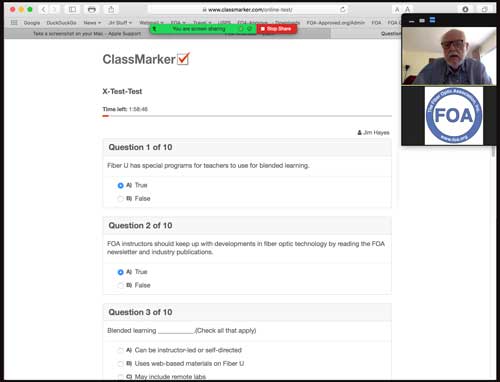
FOA Zoom Exam Proctoring
Online
Certification Testing
FOA has all its certification tests available
online, both for use by our schools and by our
direct "Work
to Cert" applicants. All FOA certification
tests require a proctor to oversee the applicant
taking the exam. In this time of social
distancing, getting a proctor can be difficult, so
FOA now has procedures for online proctors
administering the exam. Contact
the FOA for more information.
OJT - On-The-Job-Training
Many novices get a job and learn on the job. They
usually have an experienced tech who helps them gain the
knowledge and learn the skills they need to
perform their job. Thinking about this in relation to
the
FOA KSAs, the knowledge, skills and
abilities needed by a fiber optic tech, the tech
will learn skills but not the basic knowledge that helps
them understand the processes involved. FOA can offer
help here with our FOA's
OJT-to-Cert Program,
using our Fiber
U online self-study programs. While the tech
learns on the job, they become a Fiber
U trainee, getting the knowledge they need,
while working under their "mentor" at work. This is
particularly good for contracting companies who need
techs but do not have the usual training courses
available. Interested in OJT programs? Click on the
link below or contact FOA
for more information.
FOA's
OJT-to-Cert Program

FOA offers free online self-study programs at Fiber
U. Many users are preparing for FOA certification
programs - taking courses at our schools or using the "Work-to-Cert"
program. Some of our schools are requiring Fiber U programs
as prerequisites for their classroom courses so they can
spend more time on hands-on activities.
FOA
School Offers Toolkit With Online Training
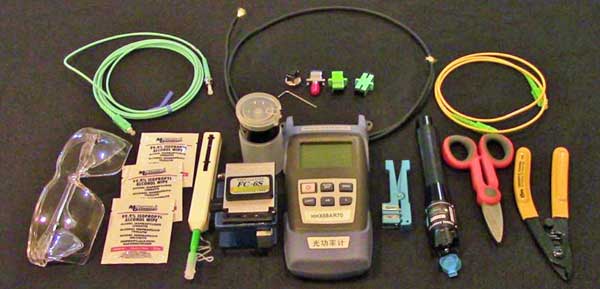
Slayton
Solutions (FOA Approved School #156) is offering a simple
fiber optic tool kit that includes a 29-piece set of fiber
optic tools and a power meter along with training videos
and online instruction for only $499. 29 Piece Kit
includes all tools and devices a technician needs to
install fiber optic connectors and test optical
power. Information
on the kit is available on YouTube.
You can contact them for more information at
slaytonsolutions@sbcglobal.net
or https://www.fiberopticsinstitute.com
|
Publications /
Resources

|
More
New FOA Video Lectures On YouTube
Did
you know YouTube will close caption videos in many
languages? Here are directions.
FOA
YouTube Video Describes On-The-Job Training (OJT)
Lecture
62: On The Job Training For Fiber Optics Using Fiber U
To
explain How OJT works and FOA's OJT-To-Cert program, FOA
created a short 10 minute YouTube video that explains what
OJT is, who uses it and how to use Fiber U to organize and
enhance OJT for new employees and experienced workers too.
More
New Videos Including FTTH Series
As part of developing the new Fiber U MiniCourses, we added
several new YouTube videos:
Lecture 56 explains the issues of cable bend radius
limitations, typical cable specifications and how to gage
the proper radius or diameter when installing or storing
cable. Lecture 57 covers problems with dirty connectors and
how to inspect and clean them.
4 New
Lectures on FTTH - #63-66
New Lecture on Fiber Optics at Electrical Utilities - #67
FOA
Lecture 51 Fiber Optic Restoration
Part 1 - Causes of Damage To The
Network
FOA
Lecture 52 Fiber Optic Restoration Part 2 -
Planning For Restoration
FOA
Lecture 53 Fiber Optic Restoration Part 3 -
Troubleshooting And Repair
FOA
Lecture 54 Fiber Optic Connector Identification
- New and old
FOA
Lecture 55 The Mysterious dB of Fiber Optics.
- Understanding dB
FOA
Lecture 56 Fiber Optic Cable - Bend Radius
- Important for Installers to Understand
Like all our YouTube lectures, they are all short
and easy to understand.
Did
you know YouTube will close caption videos in many
languages?
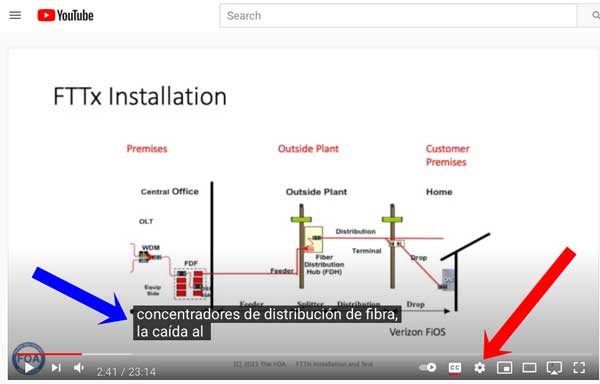
Sign in with Google to get translations for closed
captioning. Click on the settings icon (red arrow.) Choose
"Subtitles". English is the default language. Click on
the arrow after "English (auto-generated) >". In the new
window click on "Auto-translate" and choose the language you
want.
FOA
Loss Budget Calculator On A Web Page 5/2020
FOA has
written many articles about loss budgets, something everyone
involved in fiber optics needs to know and needs to know how
to calculate. We recently discovered how to get a
spreadsheet ported to a Web page, so we created this web
page that calculates loss budgets. We have an iOS loss
budget app, but with this web page, you can calculate loss
budgets from any device, smart phone, tablet, laptop, or
desktop computer that has web browsing capability.

Bookmark this page (especially on your smartphone): FOA
Loss Budget Calculator Online
 We are
continually updating the Online Reference Guide to keep up
with changes in the industry and adding lots of new pages of
technical information. When you go to the FOA
Guide Table of Contents to see the latest updates -
look for
We are
continually updating the Online Reference Guide to keep up
with changes in the industry and adding lots of new pages of
technical information. When you go to the FOA
Guide Table of Contents to see the latest updates -
look for  . .
Recent updates:
FTTH
Updates: Added a section on FTTH Network Design, updated
Architecture and PONs (10G)
Color
Codes For Fiber Optics
Fiber
Optic Projects - the FOA Guide to projects from concept
to operation
Coherent
Communications Systems in the FOA Guide.
Go
to The
FOA Online Fiber Optic Reference Guide.
FOA Reference Books
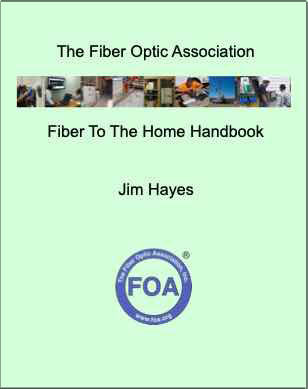
NEW: FOA's
FTTH Handbook: We've gathered all our
information on FTTH from the FOA Guide and past issues of
the FOA Newsletter and edited it into a 112 page "FTTH
Handbook." We even added a section on planning and managing
FTTH Projects.
The
Fiber Optic Association Fiber To The Home Handbook
is available from Amazon in print and Kindle
editions.


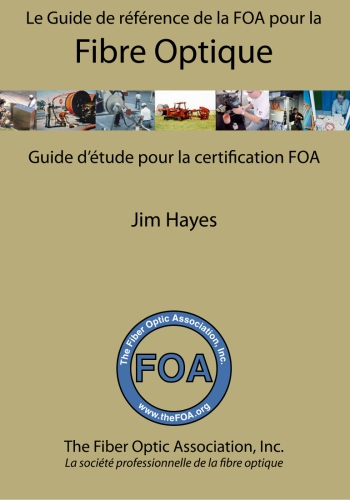






Fiber Optics (4 languages), Premises Cabling, OSP fiber and
construction, Network Design, Testing and FTTH
The
FOA has it's own reference books for everyone working in
fiber optics - contractors, installers and end users as
well as for use as textbooks in classes at educational
institutions. They are available as printed books or
Kindle at much lower prices than most textbooks since we
self-publish and sell online, cutting out the middlemen.
Click on the book images for more information. The
Reference Guide To Fiber Optics is also available in
Spanish and French (print and online) and Portuguese
(online only.)
Click
on any book for more information about it.
FOA has
reprinted

"Lennie
Lightwave's Guide" on its 25th anniversary in
a special print edition.
Lennie
and Uncle
Ted's Guides are online or as free iBooks on iTunes.


Click
on any of the books to learn more.
- Fiber
Optic Safety Poster to download and print
Resources
For Teachers In K-12 And Technical Schools
Teachers in all grades can introduce their students to
fiber optic technology with some simple demonstrations.
FOA has created a page for STEM or STEAM (science,
technology, engineering, arts
and math) teachers with materials appropriate to their
classes. Fiber
Optic Resources For Teachers.
|
Safety
|
On
Safety
FOA
considers safety an integral part of all our programs,
curriculum materials and technical materials. We start all
our textbooks and their online versions with a section on
safety in the first chapter, like this: Before
we get started - Safety First!
There are pages on the FOA Guide on Safety
procedures Including Eye Safety and. Digging
Safely
And a YouTube lecture: FOA
Lecture 2: Safety When Working With Fiber Optics
In our OSP Construction Section, these pages cover many
safety issues including those related to the construction of
the cable plant: Project
Preparation And Guidelines, Underground
Cable Construction, Underground
Cable Installation and Aerial
Cable Installation.
There is even a safety poster for the fiber activities: PDF
Safety Rules For Fiber Optics
The FOA is concerned about safety!
There
is a toll-free "call before you dig" number in the USA:
Dial 811
See
www.call811.com for
more information
The
Common Ground Alliance has an excellent "Best
Practices Guide" online
- The
US Department of Transportation has a website called "National
Pipeline Mapping System" that allows one to
search for buried pipelines.
Why
We Warn You To Be Careful About Fiber Shards
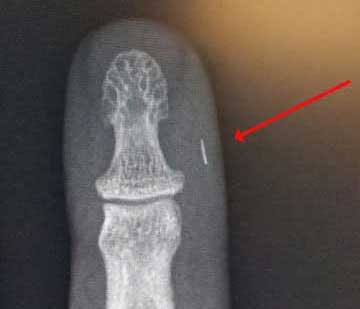
Photo courtesy Brian Brandstetter, Mississauga
Training Consultantcy
Safety
Leader Magazine
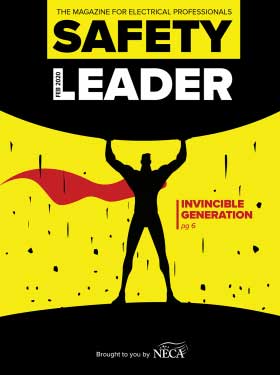
Safety Leader, a new quarterly magazine, informs and
educates electrical contractors on safety from various
angles—electrical, workplace, PPE, regulations, leadership,
line work, NFPA 70E, and more. Safety Leader is bundled with
ELECTRICAL CONTRACTOR in February, May, August and November.
To receive Safety Leader subscribe
to ELECTRICAL CONTRACTOR magazine here or subscribe
to the ELECTRICAL CONTRACTOR newsletter here.
2022
Conference On Damage Prevention In Phoenix

Global
Excavation Safety Conference
Phoenix
AZ
March
1-3, 2022
GlobalExcavationSafetyConference.com:

The magazine, dp-Pro, sponsor of the conference, has
also published it's latest issue with an article by FOA
on "New Construction Techniques in Fiber Optics" and a
overview of the FOA. You
can read the magazine here.
When
You Bury Marker Tape, Bury One That Will Work (July 2021)
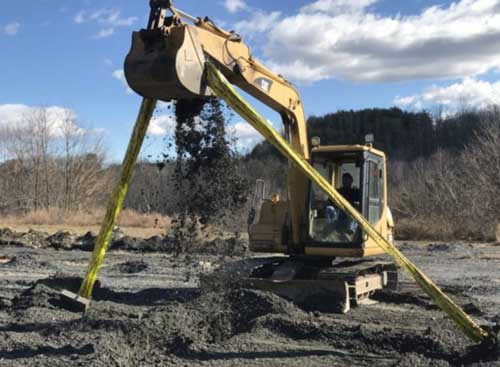
Signaltape®
provides a visual warning by ensuring tape is brought to the
surface, alerting the operator to the presence of a buried
utility. It includes a 3,000-lb. tensile strength aramid
fiber membrane, which ensures the tape is pulled to the
surface to alert the excavation crew. Signaltape
comes in two sizes: 12″ x 1000′ or 6″ x 1000′.
Best
Practices Guide For Underground Construction
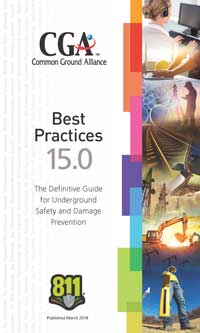
We
assume you are familiar with the "One Call" and "Call
Before You Dig" (811) program, but are you also
familiar "Click
Before You Dig.com" and with the people behind
it - the Common Ground Alliance and their Best Practices
website?
Officially
formed in 2000, the CGA represents a continuation of the
damage prevention efforts embodied by the Common
Ground Study.
Sponsored by the U.S. Department of Transportation and
completed in 1999, this Study represents the collaborative
work of 160 industry professionals who identified best
practices relating to damage prevention. Any
best practice or program endorsed by the CGA comes with
consensus support from experts representing the
following stakeholder groups: Excavators, Locators, Road
Builders, Electric, Telecommunications, Oil, Gas
Distribution, Gas Transmission, Railroad, One Call,
Public Works, Equipment Manufacturing, State Regulators,
Insurance, Emergency Services and Engineering/Design.
Read
the CGA Best Practices Guide here.
Here
are all the CGA resources for damage prevention.
The
US Department of Transportation has a website called "National
Pipeline Mapping System" that allows one to search
for buried pipelines. |
FOA/About
About
The FOA
- Contact
Us: http://www.foa.org
or email <info@foa.org>

FOA
has a company page and four LinkedIn Groups
FOA
- official company page on LinkedIn
FOA
- covers FOA, technology and jobs in the fiber optic
marketplace
FOA
Fiber Optic Training - open to all, covers fiber optic
technology and training topics
Grupo
de La Asociación de Fibra Óptica FOA (Español)
|
What is The FOA?
The FOA is a, international non-profit educational
association chartered to promote professionalism in fiber
optics through education, certification and standards.
Founded in 1995 by a dozen prominent fiber optics trainers
and leaders from education, industry
and government as
a professional society for fiber optics and a source of
independent certification, the FOA has grown to now being
involved in numerous activities to educate the world about
fiber optics and certify the workers who design, build and
operate the world's fiber optic networks.
Read
More
FOA
was 25 years old July 2020 - Read about FOA's history
Learn
More About FOA's History.
Contact
Us
The Fiber Optic Association Inc.
http://www.foa.org or email
<info@foa.org>
The
FOA Home Page

Want
to know more about fiber optics? Study
for FOA certifications? Free
Self-Study Programs are on "Fiber
U®." Looking for specific information? Here's the
largest technical reference on the web: The
FOA Online Fiber Optic Reference Guide.

Free
online self-study programs on many fiber optics and cabling
topics are available at Fiber
U, FOA's online web-based training website.
|
-
Contact
Us
The Fiber Optic Association Inc.
http://www.foa.org or email
<info@foa.org>
- Phone:
1-760-451-3655
The
FOA Home Page
Fiber
Optic Timeline
(C)1999-2022, The Fiber Optic Association, Inc. |
FOA
Logo Merchandise
New
FOA Swag! Shirts, Caps, Stickers, Cups, etc.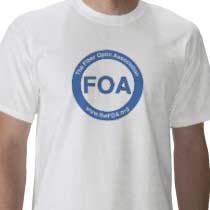
The FOA
has created a store on Zazzle.com offering lots of new logo
merchandise. It has lots of versions of shirts and other
merchandise with "FOA," "Fiber U," "Lennie Lightwave"
designs and more so you should find something just for you!
See FOA
on Zazzle.
-
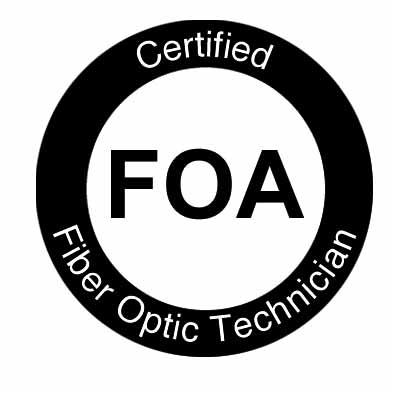
Your
Name, CFOT® - It pays to advertise!
The
FOA encourages CFOTs to use the logo on their business
cards, letterhead, truck or van, etc. and provides logo
files for that purpose. But we are also asked about how to
use the CFOT or CFOS certifications. Easy, you can refer
to yourself as "Your Name, CFOT" or "Your Name, CFOS/T"
for example.
Feel
free to use the logo and designations to promote your
achievements and professionalism!
Contact
FOA at info@thefoa.org to get logos in file format for your
use.
Privacy
Policy (for the EU
GDPR): The FOA does not use cookies or any other
web tricks to gather information on visitors to our
website, nor do we allow commercial advertising. Our
website hosts may gather traffic statistics for the
visitors to our website and our online testing service,
ClassMarker, maintains statistics of test results. We do
not release or misuse any information on any of our
members except we will confirm FOA certifications and
Fiber U certificates of completion when requested by
appropriate persons such as employers or personnel
services.
Read
the complete FOA Privacy Policy here.
|

















 From
MIT website .
From
MIT website . 



































 .
.








